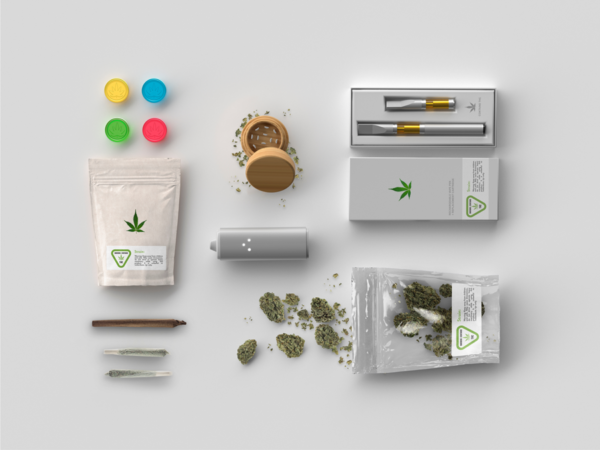
Packaging: Edible cannabis packaging considerations
By Carol Zweep
Packaging cannabis In Canada, plain packaging and labelling are required on cannabis-related products. Additionally, there
are restrictions on logos, colours, and branding. Photo © Elton Clemente / Adobe Stock
In Canada, plain packaging and labelling are required on cannabis-related products. Additionally, there
are restrictions on logos, colours, and branding. Photo © Elton Clemente / Adobe Stock The Canadian Cannabis Regulations were amended to include regulatory framework for edible cannabis in October 2019. Edible cannabis is intended to be consumed in the same manner as food. Edibles have grown in popularity in Canada, especially in beverages, gummies, chocolate and caramels, chews, and taffy.
Labelling
Product restrictions are in place for edible cannabis. There are also packaging and labelling restrictions to ensure consumer safety. The maximum amount of THC (delta-9-tetrahydrocannabinol) allowed is 10 mg per package of edible cannabis. Regulations prohibit the addition of vitamins or minerals to edibles. The product must not contain nicotine or added alcohol. There are also limits on caffeine amounts. Edible cannabis cannot be sold or distributed as a product that requires refrigeration or in a hermetically sealed container with pH exceeding 4.6 and water activity exceeding 0.85 at 22 C.
Similar to the Canadian labelling regulations for food, bilingual mandatory information is required on edible cannabis packaging, including common name, net quantity, ingredient list, allergen declaration, nutrition facts table, and durable life date (if 90 days or less). Other information required for edible cannabis includes the standardized cannabis symbol, THC and CBD (cannabidiol) content, contact information of the license holder, class of cannabis, lot number, recommended storage conditions, packaging date, cannabis possession statement (equivalency to dried cannabis) and warning statement. Health and dietary claims cannot be made.
Regulation
There are specific regulations with regards to the packaging that is intended to reduce the accidental consumption and appeal of edible cannabis product to youth while still providing information to consumers. Plain packaging and labelling are required with restrictions on logos, colours, and branding. Specifically, the container must be a single uniform colour (no fluorescent or metallic hues), have smooth texture, no special features (i.e. heat-activated ink, sound, or scent emission), no inserts, pamphlet or tags, no windows, and no images. Child-resistant packaging must be used, and packaging must include a health warning message.
Packaging
The packaging in direct contact with edible cannabis must meet the Canadian Food Packaging Regulations The regulations prohibit the use of packaging that may impart any substances to the food, which may be harmful to the consumer.
Another important consideration is the role packaging plays in the shelf life of the food product. Depending on the nature and sensitivity of the food, the packaging should have the appropriate barrier properties to oxygen and moisture to maintain the quality of the edible cannabis product for the duration of the product shelf life.
Plastic pollution is a global concern. With a mind to reduce the amount of packaging waste, the federal government is permitting flexible use of packaging materials. The use of innovative, environmentally friendly packaging within the regulatory constraints is encouraged.
Producers of edible cannabis are challenged with strict packaging and labelling regulations. Restrictions on the ability to brand, design, and market their product make it hard to distinguish them in the marketplace.
However, it is important to ensure that appropriate measures are in place to provide necessary information in order to safeguard consumers while still producing a quality product that has safe packaging.
Carol Zweep is food consulting manager for NSF. Contact her at czweep@nsf.org.
This column was originally published in the August/September 2023 issue of Food in Canada.
Print this page